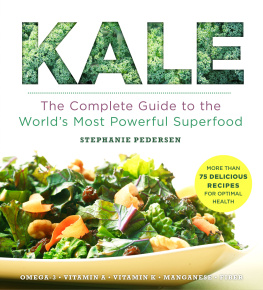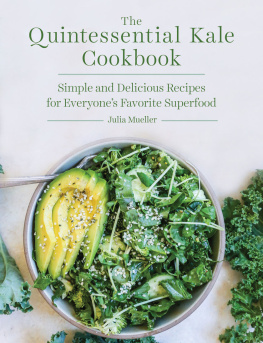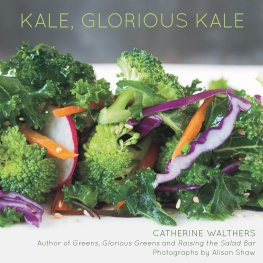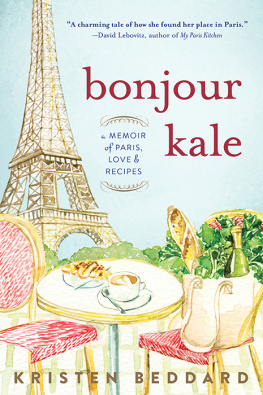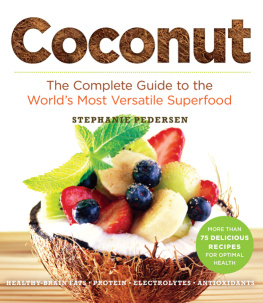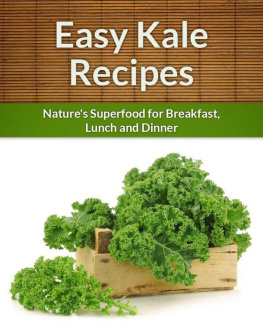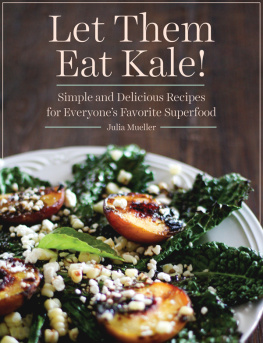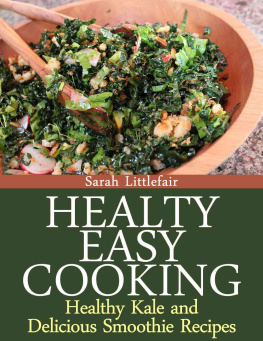Kale
The Complete Guide to the
Worlds Most Powerful Superfood
STEPHANIE PEDERSEN, MS, CHHC


STERLING and the distinctive Sterling logo are registered trademarks
of Sterling Publishing Co., Inc.
2013 by Stephanie Pedersen
Interior design by Allison Meierding
All rights reserved. No part of this publication may be reproduced, stored in a retrieval system, or transmitted, in any form or by any means, electronic, mechanical, photocopying, recording, or otherwise, without prior written permission from the publisher.
ISBN 978-1-4549-0626-1
For information about custom editions, special sales, and premium and corporate purchases, please contact Sterling Special Sales at 800-805-5489 or specialsales@sterlingpublishing.com.
2 4 6 8 10 9 7 5 3 1
www.sterlingpublishing.com
PRODUCED BY
AUTHORSCAPE INC.
I came late to kale. My Danish cousins ate it in Aunt Jensens grnklssuppe. My friends from Scotland and Wales and Ireland and Sweden and Germany and Poland and Russia grew up eating it. Thousands of generations of European peasants, soldiers, artisans, royalty, merchants, men, women, and children were nourished by it.
But me? I was an adult before I even laid eyes on the leafy stuff. That may be because I spent my early years in Australia and California, surrounded by non-leafy vegetables. Or, it could be that, like many children of the 1970s and 80s, the only vegetables I ate came from a can and were usually green beans, peas, peas n carrots, tomato sauce, or beetroots, with the occasional fresh cob of corn or head of iceberg lettuce.
My first hands-on experience with kale came when I was in my 20s and working in New York City as a kitchen assistant at the Natural Gourmet Institute, the renowned whole foods cooking school where revolutionary natural foods chefs such as Peter Brearley, Myra Kornfield, Elliot Praag, and Dianne Carlson taught.
Kitchen assistants are the people who help cooking instructors get ready for a class by prepping the ingredients and doing the backstage work during a cooking class. That particular day, a note was waiting for me and two others: Wash and dry all bunches of kale. Despite a childhood spent tending my parents berry patch and fruit trees, I couldnt identify which of the gorgeous leafy bundles in front of me was kale.
I turned to another assistant, who shrugged. The third assistant, also unsure, shook his head. Finally, the chef wandered in, saw our confusion, and gave us a quick lesson in kale. The dark, nubbly leaves were Lacinto kale from northern Italy. The tightly ruffled leaves were everyday curly kale. The kale with the magenta rib, was red kale.
Over the course of the next four hours, the three of us eagerly learned how to clean kale, prep it, cook it, and use it. We learned it was one of the most nutrient-dense veggies around and that it was just as good in soups as it was sauted in coconut or olive oil.

We also learned the subtle differences of the different types. That it tasted sweeter after a frost. That it grew in the Northern Hemisphere. That it was an ancient member of the cabbage family, more ancient than cabbage itself and the vegetable most other brassica family offispring (such as broccoli and kohlrabi) had descended from. That hippos in the Washington, D.C. zoo ate more than 10 pounds of kale each per day. That the Irish made something called colcannon out of it.
Wanting to get every drop of wisdom we could on this new-to-us veggie, we assigned one of us to take frantic notes while the other two of us worked the kitchen.
After that class, I headed for the farmers market to stock up, then to the library to check out every cookbook I could find that contained kale recipes. I tried a different kale recipe nearly every day, all the while thanking my luck for having a husband who likes kale! After two months, I got bored. Attempting to shake things up, I began writing some of my own kale recipes.
I adored the way this mighty brassica tastedbitter and smoky, pungent and slightly sour. Deeply earthy and nourishing. I loved its meaty texture. I was in awe of the omega-3 fatty acids, fiber, phytonutrients, vitamins, minerals, and all of the other good things this leafy green contains. The vegetable felt substantial and fortifying.
What all this experimentation showed me is that kale is gloriously versatile. I began using kale as the basis of vegan, vegetarian, and non-vegetarian main dishes. I started to garnish with kale. I use it today as a salad, as a side veggie, as a snack, and in drinks and soups and sauces. I have even been known to use it in a floral arrangement, as a centerpiece, and as packing material (the curly leaf is best for this!).
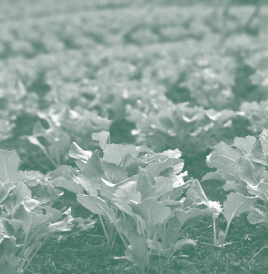
Along the way, I learned a few wonderful things firsthand:
- Kale can make your skin look phenomenal, due to its high content of skin-beautifying omega-3 fatty acids, antioxidants, and vitamins A, C, and E. I was no longer experiencing monthly breakouts, my crows feet softened, and some of the sunspots on my face faded or disappeared.
- Kale provides a sustained energy and increased physical stamina, due to the omega-3 fatty acids.
- Kale helps joints feel better and promotes faster healing between sessions of heavy exercise, thanks to vitamin K, omega-3 fatty acids, and an outstanding number of anti-inflammatory flavonoids. For me, this meant I could go running four days a week without pain.
- Kales generous fiber content fills the tummy, which left me feeling so satisfied I wasnt interested in after-meal snacking.
- The high beta-carotene content has been linked with improved eyesight. My own fuzzy low-light sight improved after two weeks of eating kale on a daily basis.
- Improved immune system function. Before adding kale to my diet, I caught one cold every four to six weeks. After eating a serving of kale each day, I caught two colds during an entire year. The veggies antioxidant content is the reason.
- While I dont have personal experience with the following conditions, my kale research uncovered mountains of studies on kales numerous nutrients and how they help prevent and heal heart conditions, high cholesterol, cancer, and diseases of the gall bladder and liver.
And, perhaps most important to my personal life, kale also helps your body powerfully and quickly get rid of toxins and old wastes.
Pregnant during the 9/11 World Trade Center attacks, I was exposed to a massive amount of toxins. I passed these on to my son, who was born with off-the-charts levels of heavy metal poisoning.
It took me a few years to learn that heavy metal poisoning was behind my childs perplexing symptoms (a complex mix of skin, digestive, sensory, sleep, and mood disorders). Once I got to the bottom of his health crisis, I began working hard to rebuild his immune system and naturally and gently detox his small body. Kale puree was one of our mainstays. I hid it in smoothies and marinara sauce. I made green eggs and mashed potatoes. I minced kale leaves into soup and meatballs and pots of brown rice, millet, and quinoa.
I increased my own kale intake to help rid myself of the metals Id acquired while pregnant. Today, were both clean and healthy, in large part due to this ancient foods super healing abilities.
Next page
